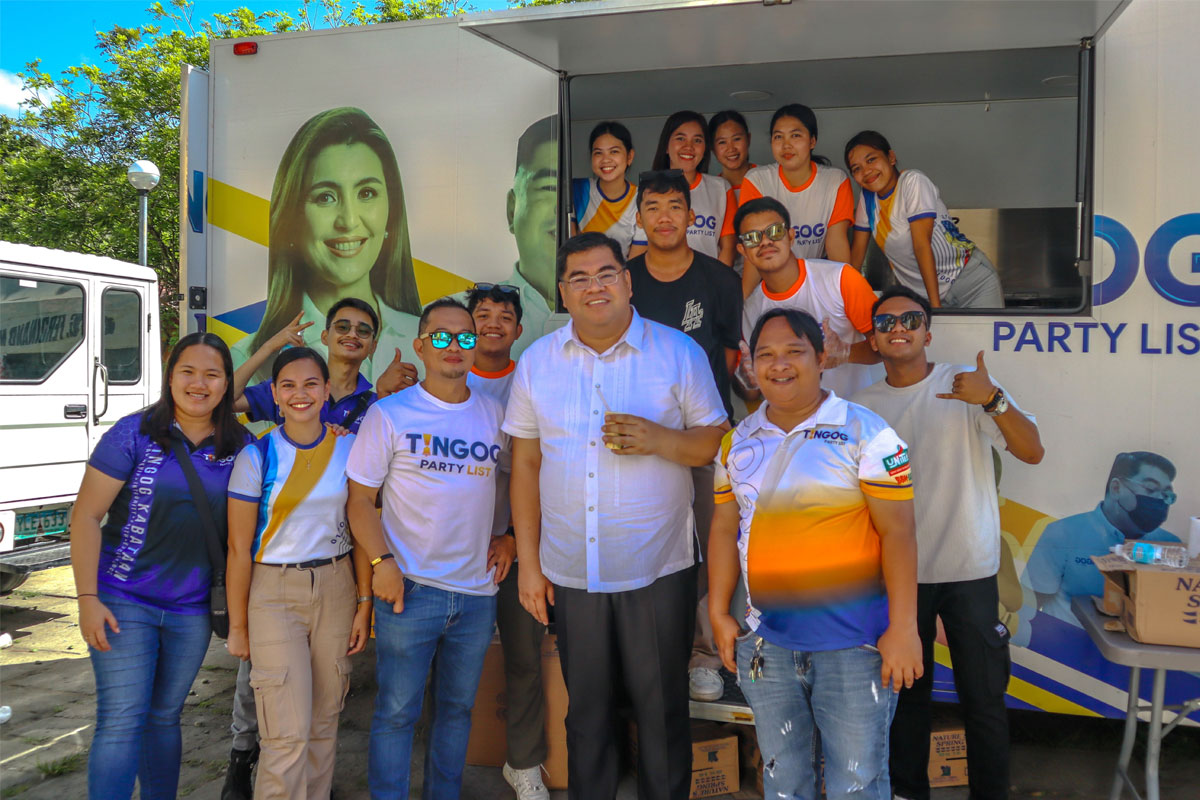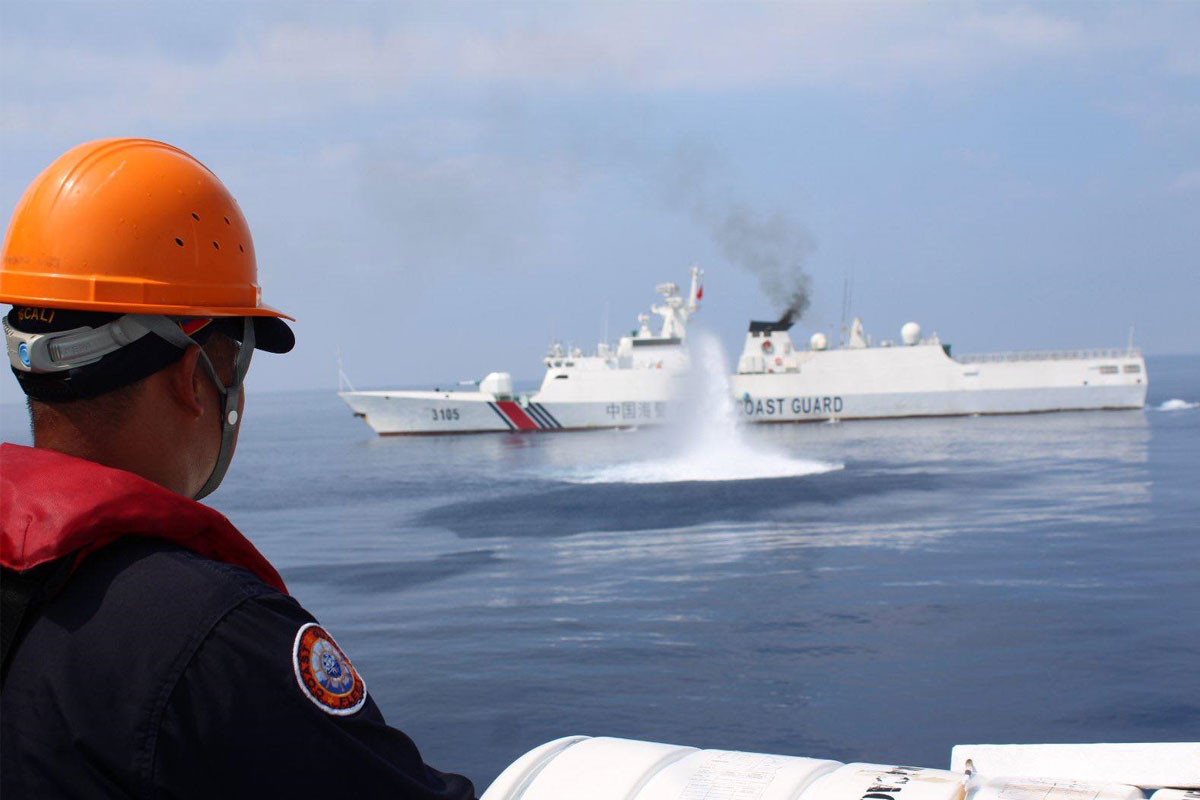 Camarines Sur Rep. LRay Villafuerte
Camarines Sur Rep. LRay Villafuerte
Villafuerte eyes work-from-home setup anew
For certain private, gov’t workers amid worsening heat wave
WITH the current heat wave seen by our climatologists to get even worse in May, Camarines Sur Rep. LRay Villafuerte said it’s time for the government and private sector to consider returning the work-from-home (WFH) setup for their respective employees—whenever and wherever feasible—to protect workers’ health and safety amid fears that daytime temperatures could shoot up in the weeks ahead to the “extremely dangerous” level of 52 degrees Celsius or higher.
Villafuerte, National Unity Party (NUP) president, said Republic Act (RA) 11165, or the Telecommunicating Act of 2018, which he co-authored, “allows employers in the private sector to adopt WFH arrangements for their employees with the use of telecommunications and/or computer technologies, instead of these workers having to go to their respective offices on a daily basis.”
Government agencies are similarly allowed to adopt WFH arrangements for civil servants, according to Villafuerte, based on Civil Service Commission (CSC) Memorandum Circular (MC) No. 6, dated June 6, 2022, that authorized government offices during the pandemic to adopt “flexible” setups in which their respective employees could work in their homes, in satellite offices near the places where their employees live, or in other places conducive for productive work.
“With daytime temperatures feared by PAGASA (Philippine Atmospheric, Geophysical and Astronomical Services Administration) to get even hotter in the weeks ahead, possibly reaching what climatologists called the ‘extremely dangerous’ index of 52 degrees Celsius or higher, the heads of both government and private offices need to consider returning the WFH arrangements, whenever and wherever feasible, to protect our workers against the unprecedented heat wave made worse by El Niño,” Villafuerte said.
He said that among the high-risk employees who should be allowed to work at home amid the extremely hot weather are senior citizens.
A former governor, Villafuerte pointed out that in his homeprovince of CamSur, for example, PAGASA projected the heat index to have soared to 45 degrees Celsius last April 22 and to 43 degrees Celsius last April 24.
Villafuerte said that RA 11165 states that “an employer in the private sector may offer a telecommuting program to its employees on a voluntary basis, and upon such terms and conditions as they mutually agree upon provided that such terms and conditions shall not be less than the minimum labor standards set by the law, and shall include compensable work hours, minimum number of work hours, overtime, rest days, and entitlement to leave benefits.”
Among Villafuerte’s proposals that were included in RA 11165 were the “fair treatment” provisions, which ensures that telecommuting employees are given the same treatment as that of employees working at the office in terms of rate of pay, right to rest periods, regular holidays, and special non-working days, same or equivalent workload, same access to training and career development opportunities, appropriate training on the technical equipment, and collective rights as the workers at the employer’s premises.
Even before the pandemic, Villafuerte had pushed for a telecommuting work arrangement for private sector employees to enhance work productivity and improve public health, in light of studies pointing to long commutes as one cause of chronic stress and other health disorders such as higher blood pressure levels that lead to cardiac attacks, diabetes and other killer diseases.
Villafuerte said that as for the WFH setup for government workers, MC 6-2022 covers national government (NG) officers, local government units (LGUs), government-owned and -controlled corporations (GOCCs) and state universities and colleges (SUCs).
He noted that in support of the current effort of the Metro Manila Development Authority (MMDA) to ease the ever worsening traffic congestion by setting a different work schedule—7 AM to 4 PM—for government offices, the CSC issued an advisory last Feb. 21 reminding all state agencies that they could adopt FWAs on the strength of the Commission’s MC 6-2022.
In its Feb. 21 advisory, the CSC stressed that FWAs have been established “to institutionalize relevant and appropriate work arrangements for government officials and employees to ensure efficient and effective performance of governmental functions and delivery of public services, and to ensure protection of their health, safety, and welfare at all times.”
Villafuerte explained that under the CSC’s MC 6-2022 and its Feb. 21, 2024 advisory, the “flexiplace” work arrangement has three options that government offices can adopt, namely:
· WFH, where the government officials or employees work at home or their residence;
· Work from satellite office, where the government officials or employees, instead of reporting to their offices, report for work at their agency satellite offices near their places of residence; and
· Work from another fixed place, where the government officials and employees render service within the Philippines, at a place conducive for productive work and efficient performance of official duties and responsibilities, other than their homes or residences and satellite offices.
PAGASA assistant weather services chief Ana Liza Solis said on radio that her office expects certain areas to “experience hotter temperatures,” with the El Niño contributing to the hotter weather and its effects possibly felt until June.
Solis, who heads PAGASA’s climatology and agrometeorology division, told the media last week that based on the weather bureau’s daily monitoring reports, 17 areas have already experienced “dangerous” heat indices of 42 degrees Celsius to 48 degrees Celsius this April.
In May, Solis said the temperature may reach 52 degrees Celsius or higher, which indicates “extreme danger.”
When the heat index ranges from 42 degrees Celsius to 51 degrees, the effects on people might be heat cramps and exhaustion, or possibly even heat strokes.
With direct exposure to the sun, Solis said that heat strokes are “imminent” or “probable” when the temperature hits the extreme danger levels.
Separately, the Department of Social Welfare and Development (DSWD) said that with summer not even halfway over, more than 1.14 million Filipinos in nine regions have already been affected by El Niño.
DSWD’s Disaster Response Operations Monitor Center said that as of mid-April, these affected people make up 244,712 families in 1,257 barangays .
It said the most affected regions are Cagayan Valley, Central Luzon, Mindoro-Marinduque-Romblon-Palawan (Mimaropa) provinces, Western Visayas, Central Visayas, Zamboanga peninsula, Soccsksargen, Cordillera Administrative Region (CAR) and the Bangsamoro Autonomous Region in Muslim Mindanao (BARMM).
Amid the current heat wave, the Department of Health (DOH) has advised the public to drink plenty of water; limit their time spent outdoors, especially between 10 AM and 4 PM; schedule heavy-duty activities later in the afternoon when the temperature is lower; wear hats or use umbrellas outdoors; and avoid drinking coffee, tea or soda, which are natural diuretics that increase urination leading to possible dehydration.
The DOH wants the public to take such precautionary steps as heat-related illnesses affect, it said, people of all ages and health conditions.
Its Event-based Surveillance and Response (ESR) system recorded 34 heat-related illnesses from January to mid-April, of whom 6 have died, although the DOJ is still checking the actual cause of death.
In an advisory this week, the International Labor Organization (ILO) has warned that the exposure of workers to extreme weather conditions can cause mental health problems like stress, anxiery and even suicide.
The Geneva-based ILO noted that governments such as that of the Philippines need to act immediately amid the rise in the number of workers affected by the extremely hot weather. “Experiences from a number of regions across the world, including the Philippines, demonstrate how extreme climate events are linked with an increased burden of post-traumatic stress disorder (PTSD), depression, anxiety, stress and suicide in people of all ages,” it said in its report.
“In the workplace, this can lead to increased job tension, higher turnover intentions and workplace hostility, and stress about extreme weather could impede the ability to make essential work-related decisions,” it added.


















